Top News

February 27, 2020 Ryukyu Shimpo
On February 26, the Okinawa General Bureau released surveillance footage of the Shuri Castle fire, captured on four security cameras positioned inside and outside the Seiden Main Hall.
According to the footage, the motion sensors detected smoke and alerted the guards of a fire.
The guards began attacking the fire with fire extinguishers 18 minutes after the alarms went off.
About 30 minutes had passed from when the alarms went off, to the fire department hosing down the fire.
At this point, the fire, which is thought to have originated in the northeastern part of the main hall, had spread south, indicating there were struggles during the initial management of the fire.
The footage shows the fire quickly spread in a horizontal line along the eaves of the roof on the northeast side of the main hall.
The video also shows an object emitting a small light in the main hall approximately 3 minutes before the motion sensors went off.
Out of the 68 security cameras in the park, footage from four cameras that captured the fire (one inside the main hall and three outside) was edited.
On Wednesday, the edited footage was released during a meeting of the “fire prevention working group,” which comprises members of the Shuri Castle Restoration Technical Review Committee.
Okinawa Commemorative National Government Park Office Director Takehiko Suzuki explained the 18-minute gap between the motion sensors going off and the initial fire extinguishing efforts: “the guards had a fire extinguisher and they were determining where to use it.”
The restoration committee chair and University of the Ryukyus professor emeritus Kurayoshi Takara said, “The footage tells us that by the time the [guards were] alerted to the fire, it was already out of control. I am reminded of how important the initial response action is.”
(English translation by T&CT and Monica Shingaki)
Go To Japanese
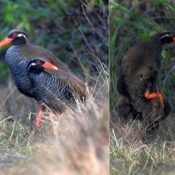
February 23, 2020 Ryukyu Shimpo
Kunigami – On the morning of February 22, a pair of what appeared to be Okinawa rails (yambaru kuina) were observed engaging in mating behavior on an agricultural road in Aha, Kunigami.
The Okinawa rail is a Natural Monument of Japan. The adorable pair of birds also preened.
At around 8:30 a.m., in the soft morning light, a single Okinawa rail poked its head out of the grass.
As the bird preened, a second rail appeared from behind it and nuzzled up to the first.
According to the Ministry of the Environment, the Okinawa rail breeding season is between March and July.
The mating behaviors seen on February 22 suggest an early spring coming to northern Okinawa.
(English translation by T&CT and Ellen Huntley)
Go To Japanese
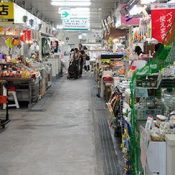
February 26, 2020 Ryukyu Shimpo
As the coronavirus (COVID19) continues to spread over the world, including throughout Japan, the prospects for Okinawa meeting their goal of bringing 10 million tourists to Okinawa this year is looking bleak, and the effects are starting to be felt all over Okinawa’s economy.
After a swath of foreign visitor travel plans, mostly from Chinese tourists, were cancelled, the damage continues as sales numbers for travel agencies have greatly dropped.
Business that rely on inventory from China have also begun to find procurement difficult, and if the contagion continues for an elongated period of time, many of these business may find themselves at risk.
Due to the continued spread of the coronavirus, travel agencies in Naha, who cater to mostly Chinese customers, are reporting that their sales have fallen to almost “zero,” and that their continued operations are being put at risk.
A bus tour company, that regularly operated four tours per day, saw their numbers in February fall to only twice per week.
It does not appear that the situation will improve from March onward.
The company is looking to cut costs in order to ride it out, however a managing director at the company explained the dire situation, saying “We are providing life-prolonging treatment to the company.”
There has also been some consideration towards making use of Okinawa Prefecture’s “Small-to-medium business safety-net fund” loan system, however with no outlook on sales improving in the near future, there is a lot of hesitation around taking out a new loan.
A representative from the bus company said, “Taking on debt when there is no clear way forward is difficult. I wonder if they will even give out a loan to a company already in the red.”
Currently, the company’s employees are being sent to work as usual, but if these effects continue the company will be forced to curtail their working days.
Another place where this effect has been felt is whale watching, for which the season is at its peak in February and March.
Travel agencies in Okinawa are reporting that tour reservations are down 30% compared to the previous year.
There have been cancellations from foreign group tours, however someone involved in the industry indicates “There have also been a number of domestic cancellations due to coronavirus fears.”
Another marine leisure company is reporting that whale-watching tour reservations are only half what they would be in a regular year.
A representative reports, “January numbers were strong at about 120-130% of the average, however due to the effects of the coronavirus new reservations have been very sluggish,” saying with a sigh that there has been a slump since the start of February.
Okashigoten (headquartered in Yomitan), which makes and sells the famous “original purple yam tart” among other things, is reporting that since the cancellations and decrease in travel began, sales at their souvenir stores and restaurants are down 10% compared to the previous year.
Looking at only inbound (visitors from other countries) sales, which largely come from China, there has been a 20% year-over-year decrease. The decrease in sales has led to a decrease in production.
Meanwhile, there is also an issue at their store in Nago that sells various goods and sundries where they cannot get the items they import from China, and they are currently looking for an alternative with domestic suppliers.
A representative commented, “We are going to re-focus not as a business that specializes in souvenirs, but as a sweets maker focused on local customers.”
(English translation by T&CT and Sam Grieb)
Go To Japanese

February 25, 2020 Ryukyu Shimpo
At about 1:10 p.m. on February 25, a steel object was dropped from a CH-53E transport helicopter, which is stationed at the U.S. Marine Corps Air Station Futenma, over the ocean 1.3 kilometers west of Torii Station in Yomitan Village.
The object was being suspended from and transported by the helicopter, during which time it became insecure and was dropped into the ocean.
The helicopter was flying out of Torii Station toward a military shooting range.
On that day, steel objects were observed being lined up and apparently used as targets for shooting training on Torii Station.
After the CH-53E took off, one of the steel objects was lost. It appears that the objects were suspened from and transported by a CH-53E helicopter.
At about 9:00 p.m. on February 25 it was announced via email that the helicopter in question belonged to the 1st Marine Aircraft Wing.
The Okinawa Defense Bureau informed the Okinawa prefectural government, the Yomitan Village government, and Ginowan City government.
According to the Defense Bureau, a U.S. military spokesperson emphasized that the military confirmed that there were no nearby ships or civilians before dropping the object.
Moreover, it was explained that the object was intentionally released in order to ensure the safety of the crew.
The Marine Corps will stop transporting similar objects until the cause is investigated.
The military spokesperson said that that dropped object does not include hazardous substances.
(English translation by T&CT and Erin Jones)
Go To Japanese

February 22, 2020 Ryukyu Shimpo
Okinawa City, Okinawa—ISSA, a member of the popular J-pop group DA PUMP, participated in Koza Night, a bar-hopping event organized by the city. ISSA was appointed night mayor (nightlife official) for Okinawa City in 2018 and while the singer is currently on tour, he took time out of his busy schedule to carry out his “official duties.” Koza Night will be held through Februray 29.
This year, 73 establishments in Okinawa City participated in Koza Night. Bar-goers can use special coupons at each establishment to enjoy specialty items for 1000 yen. ISSA visited Ryukyu CHOP, located in Moromizato, and enjoyed the chicken wing special with some beer. The night mayor commented on the allure of the city: “You can only find this unique culture of diverse music and cuisine in Koza.”

ISSA (left) enjoying Koza’s bar hopping event and carrying out his official night mayor duties on February 19 in Moromizato, Okinawa City.
(English translation by T&CT and Monica Shingaki)
Go To Japanese
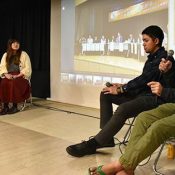
February 24, 2020 Ryukyu Shimpo
February 24 marked the passage of one year since the prefectural referendum showing Okinawans’ opposition to the land reclamation in Henoko, Nago as part of the relocation of U.S. Marine Corps Air Station Futenma in Ginowan. On February 23, four youth in their 20s who worked hard to make the referendum happen held a talk event called “Thinking About Our Referedum Now” in Asato, Naha. There, they discussed their frustration at seeing the popular opposition to the base ignored and the new base construction pushed forward, while reconfirming the passion that went into realizing the referendum and emphasizing the importance of taking action.
Jinshiro Motoyama, age 28, who was the representative of the ‘Henoko’ Prefectural Referendum Association, Asahi Fukuhara, 25, and Kei Senaha, 25, who worked together with Motoyama, and Nitsuki Karimata, 22, who works as a peace guide, took the stage.
Motoyama started a movement to gather signatures to request that a prefectural referendum ordinance be passed in order to create an opportunity for people to start a conversation about the base issue. Senaha agreed with the cause, believing that Okinawa’s future must be decided by Okinawans. But in the first month, the signatures they gathered were a mere 5% of their target, and Senaha says he was nervous.
In the end, they gathered more than 90,000 valid signatures. “People signed on in order to have a prefectural referendum held for the sake of Okinawa, whether they were for or against the base,” said Senaha. He recalls feeling vexed that five cities, including Ginowan, announced that they would not participate in the prefectural referendum. “It showed the true state of democracy in Japan,” Karimata says.
After that, Motoyama held a hunger strike. He said he wants the fact that they managed to get the prefectural referendum held “to make people think about the meaning of being able to vote, and to remember that there was someone who put himself on the line for the sake of the right to vote.”
The new base construction continues to move forward in spite of the popular will. “I don’t think it’s something that will change overnight,” said Fukuhara. “Just because we voted doesn’t mean it’s over. Thinking about its meaning again now changes the significance of the referendum.”
(English translation by T&CT and Sandi Aritza)
Go To Japanese

February 21, 2020 Ryukyu Shimpo
Igei, Kin is a prominent rice-growing region in Okinawa. In the Igei rice fields, cosmos flowers are in full bloom. The beautiful weather on February 20th brought people to the fields to be delighted by the colorful flowers swaying in the wind.
In December of last year, following the second rice harvest, locals scattered cosmos seeds across approximately 25,000 square meters of rice fields. The flowers blooming across the area conjure feelings of an early spring. Kyoko Kinjo and Natsumi Yohena, who came from Naha to visit the fields, say “We saw the flowers on a friend’s Instagram and decided to come ourselves. We were surprised by how beautiful it is.”
(English translation by T&CT and Ellen Huntley)
Go To Japanese

February 17, 2020 Ryukyu Shimpo
By Tamiko Suzuki
Yoshina Kishimoto, 39, a Naha City native, works at a Washington, D.C. patent law firm where she files patent applications for trademarks and designs.
Unlike Japan, the U.S. employs a unique patent agent system.
Owning design patents and trademarks are beneficial to companies conducting business in the world’s largest economy, and filing applications to the United States Patent and Trademark Office is essential to protect intellectual property rights.
At Kishimoto’s law firm, Japanese-American lawyers and patent attorneys strategically file patent applications for their clients, many of which are major Japanese corporations including auto manufacturers and sole proprietors.
In order to prepare these documents, business-level English fluency and excellent Japanese language skills are required.
Kishimoto said, “I learned in the six years since joining the firm; my business English writing skills have greatly improved.
This job requires speed and accuracy—focus is important since the work involves meticulous tasks.”
Kishimoto said she is “proud to contribute” to the global success of the firm’s Japanese clients.
Her office is located near the White House, and she says she often catches glimpses of President Trump and the first lady, the Vice President’s impressive motorcade, and dignitaries from around the world.
“The best part of being in Washington D.C. is being reminded everyday that we’re at the center of politics,” Kishimoto commented with a smile. She dreams to one day “spread the beautiful yet practical traditional cultures of Japan and Okinawa, like the traditional furoshiki wrapping cloth.”
(English translation by T&CT and Monica Shingaki)
Go To Japanese
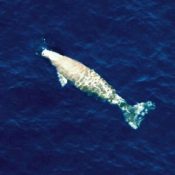
February 18, 2020 Ryukyu Shimpo
The Okinawa Defense Bureau has not been able to confirm that the ocean around Okinawa Island is inhabited by dugong through its dugong surveys being conducted in association with construction the Futenma Replacement Facility.
In November of last year, the scope of the surveys was expanded to the waters surrounding Okinawa Island, and surveys were conducted by aircraft over the course of four days, but habitation by the dugong was not observed.
On February 17 the Ministry of Defense held the 24th Environmental Surveillance Committee meeting, at which experts explained the progress of the surveys up through January of this year pertaining to the dugong.
Aside from the surveys conduced using aircraft, surveys such as underwater audio recording surveys and feeing ground trace surveys have not obtained results that can confirm habitation by dugong.
The Okinawa Defense Bureau has been conducting aircraft surveys to confirm habitation by the dugong since 2007.
Initially, three individual dugong were confirmed to inhabit the ocean area around the northern part of Okinawa Island.
However, “specimen C” was last identified in June 2015, and “specimen A” has not been observed since September 2018. “Specimen B” was found dead on a breakwater in Nakijin Village in March last year.
(English translation by T&CT and Erin Jones)
Go To Japanese
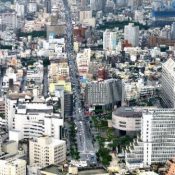
February 20, 2020 Ryukyus Shimpo
The Nansei shoto Industrial Advancement Center (NIAC, Mitsuru Omine, president) announced their estimation of the effects the corona virus would have on the Okinawan economy February 19.
They estimate that the effects of the virus would continue from February through July, and could potentially lead to a decrease in tourist visitors of around 500,000 people, equating to a decrease in tourism revenue of about 28.1 billion yen.
The NIAC is predicting that 300,000 visitors from China, roughly 40% of the 750,000 Chinese visitors that came to Okinawa in 2019, would cancel their travel plans to Okinawa. In addition to the Chinese visitors, if the virus causes from other countries as well as domestic visitors to cancel their plans, the total number could reach 500,000 cancellations.
The following decrease in tourism revenue, which comes mostly from lodging and dining, could lead to an adjustment in employment, and the NIAC is estimating job losses around 1,940.
The nominal GDP, which excludes things such as purchase price, could also see a decrease of around 19.6 billion yen, from sources such as a decrease in personal expenditure related to job losses as well as a decrease in capital investment due to a low growth rate.
The real GDP is predicted to be 0.2%, and tax revenues, calculated as both national and local tax, could decrease 3.8 billion yen.
If domestic tourists continue to visit as usual, but there is still the predicted 300,000-person decline in Chinese visitors, the loss of revenue would only be 13.8 billion yen, with a 940 decrease in jobs.
Chinese tourists, compared to visitors from other foreign countries as well as domestic tourists, have a higher per-person expenditure, whether arriving by plane or by sea, so a decrease in visitors quickly has a major impact on the overall tourism revenue.
NIAC senior researche Takeshi Kinjo indicates, “We are already seeing cases of visitors from foreign countries other than China as well as domestic tourists cancelling their travel plans.
While it is difficult to foresee when this issue with be resolved, if the spread of the virus continues for a lengthy period of time, the effects could become even more drastic.”
(English translation by T&CT and Sam Grieb)
Go To Japanese
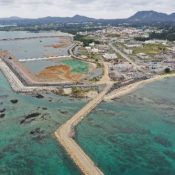
February 17, 2020 Ryukyu Shimpo
Regarding the issue that data existed indicating the presence of “weak” ground deeper than 70 meters below the sea surface at the location of the new base construction in Henoko, Nago, Niigata University emeritus professor of geology Masaaki Tateishi and his survey team performed their own investigation of the stability of a planned embankment on the basis of this data. On February 16, it was learned that their investigation indicated the result that in a worst-case scenario, the embankment could collapse.
The Ministry of Defense asserts that there is no need to re-survey the ground strength at this deep location, but Professor Tateishi says, “[the government] should perform another survey and publicize the data.”
The data in question relates to the strength of the ground at the “B27” location where installation of a large concrete embankment is planned, and comes from a survey carried out by a contractor hired by the Ministry of Defense.
According to Professor Tateishi, when he and his team analyzed the stability of the ground using this data, the stability did not satisfy the standard for port facilities designated by the Ministry of Land, Infrastructure, Transport and Tourism, and the analysis yielded the result that the large embankment planned to be installed on this ground would have a risk of collapse.
The Ministry of Defense did not reflect this data in its design on the grounds that the contractor merely performed an independent and simple survey and the reliability of the data was low.
At a news conference on February 14, Defense Minister Taro Kono stated that the survey resulting in the data “is not something that can be called a mechanical test [for finding the strength].”
The Ministry of Defense has concluded that the strength of the ground at the deep B27 location is “extremely hard” based on mechanical tests performed at three spots ranging from 150 to 750 meters away from the B27 location.
The Ministry of Defense plans to submit an application to Okinawa Prefecture next month regarding plan changes required to carry out improvement work on the weak sea floor.
The ministry asserts that another survey of the B27 location is “unnecessary” (Minister Kono) on the grounds that the ministry’s technology investigation committee, composed of experts in the field, has carried out thorough discussion on the matter.
Professor Tateishi’s survey team is composed of around a dozen experts in geology-related fields.
Based on geological surveys, it has also raised such issues as the high likelihood that an active fault is present at the planned site of construction of the new Henoko base.
(English translation by T&CT and Sandi Aritza)
Go To Japanese












 Webcam(Kokusai Street)
Webcam(Kokusai Street)


